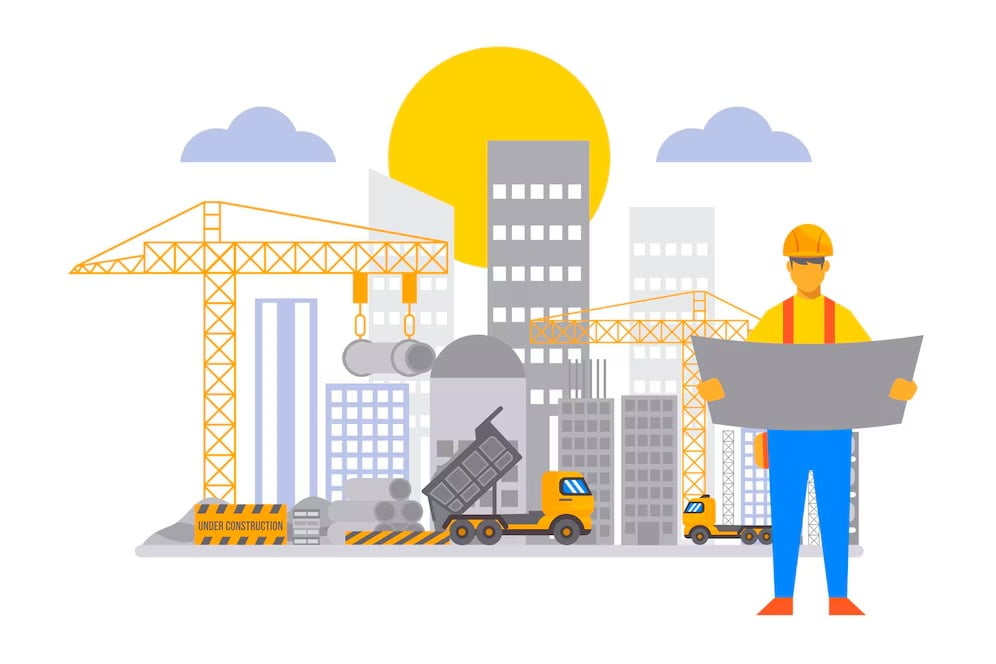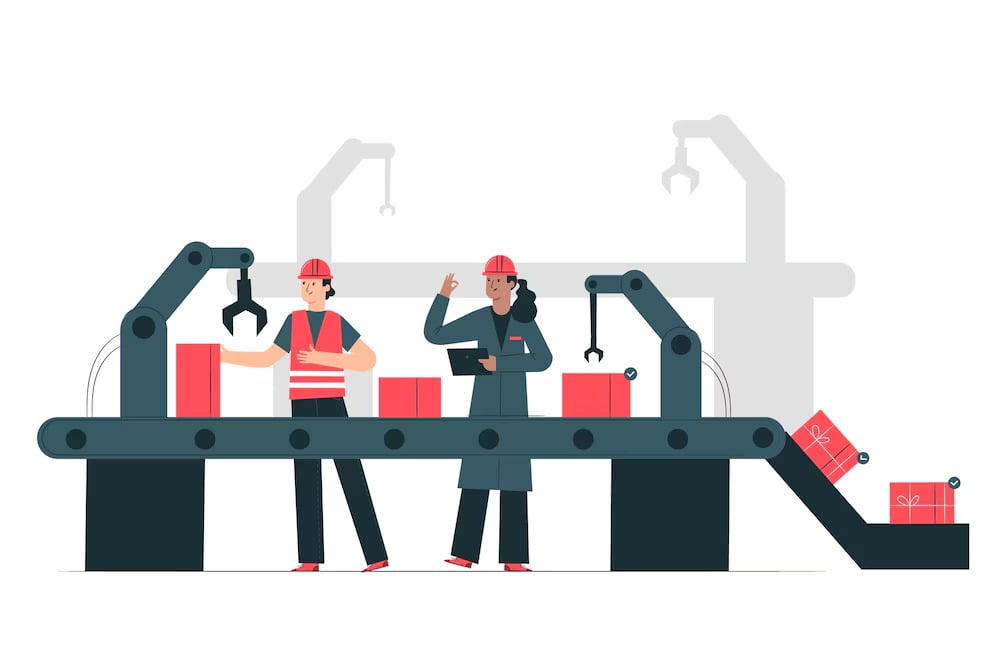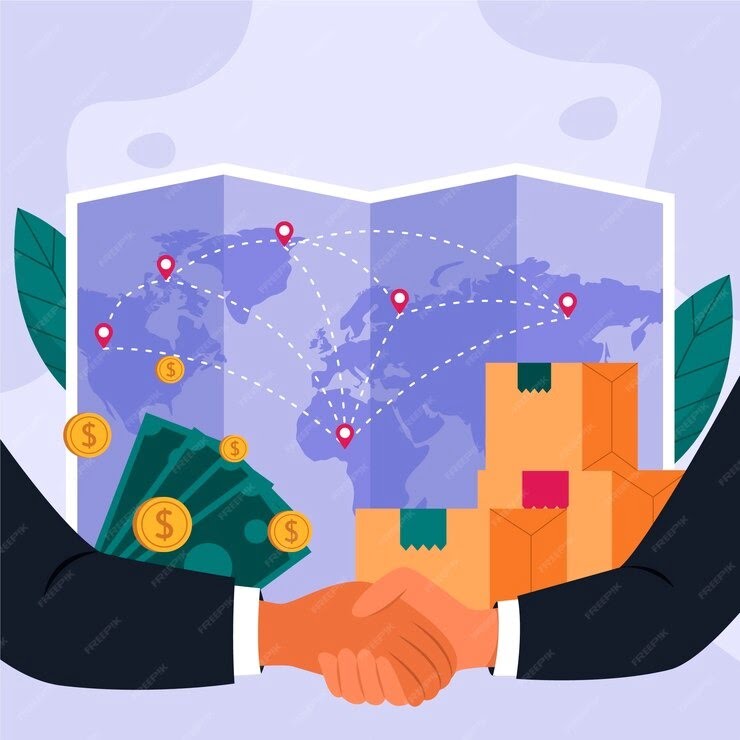
10 Reasons India Grows While Pakistan Faces Economic Challenges
India and Pakistan are both in South Asia, but their economies have grown in very different ways. Indian economies have been growing a lot over the last few decades, but Pakistan’s economies have been having a hard time. India’s economic success is due to a number of reasons, while Pakistan’s economy is still having problems.
Table of Contents
1. Political Stability

India:
India’s strong democratic structures, multi-party system, and history of peaceful power changes have made its government stable. A strong democratic framework provides stability, which builds investor confidence and makes it possible to plan policies for the long run. India’s federal system also gives states some freedom so they can make policies that fit their own economic needs. This helps the growth of the whole country.
Pakistan,
on the other hand, has had times when its government has changed a lot and there have been military coups, unrest in the civilian population, and moments of political instability. This volatility has led to policy confusion, which makes it harder to plan for the long term economy and scares away potential investors. The military’s involvement in politics has also made people think the country is unstable, which hurts investor trust.
2. Economic Reforms

India:
The License Raj was ended, trade was made easier, and the economy was made available to foreign investors when India started its economic changes in the early 1990s. A lot of foreign investment has come in because of these reforms, which have also increased competition and productivity across all areas. Also, attempts to privatize have led to the growth of successful private businesses, which has helped the economy grow and bring about new ideas.
Pakistan:
Pakistan hasn’t always been able to change its economy, and political unrest has often made things worse. There have been sporadic efforts to open up the economy, like privatization plans, but progress has been slow and has been slowed down by people with strong vested interests. Lack of political agreement and bureaucratic inertia have made it hard to adopt broad reforms, which has limited the economy’s ability to grow.
3. Demographic Dividend

India:
India has a large and young population, which is called a “demographic dividend.” This offers both opportunities and challenges. The number of people of working age drives economic growth and spending, giving the country an edge in the global market. To make the most of this demographic benefit, however, investments must be made in education, healthcare, and skill development to make sure that the workforce is well-trained and able to do its job.
Pakistan:
Like India, Pakistan has a young population, but the country has had trouble making the most of this demographic edge. The workforce isn’t being used to its full potential because of high unemployment rates among young people and a lack of educational and vocational training options. To deal with these problems, everyone needs to work together to improve the quality of schooling, make vocational training programs bigger, and create jobs in new areas.
4. Foreign Direct Investment (FDI)

India:
India has become a popular place for foreign investors to put their money because it has a big market, a skilled workforce, and a business environment that is getting better. Government programs like “Make in India” have made it easier for FDI to come in, especially in industry, infrastructure, and technology. FDI not only brings in money, but it also makes it easier to share technology, get management advice, and get into global markets.
Pakistan:
Pakistan has a lot of promise, but it has had a hard time attracting large amounts of foreign direct investment (FDI). This is because of security concerns, bureaucratic red tape, and regulatory hurdles. Even though steps have been taken to make it easier to invest and make the business environment better, problems like unstable politics and security risks still keep foreign investors away. To solve these problems, big changes need to be made to make the setting more investor-friendly and lower the risks that people think they face.
5. Infrastructure Development

India:
To help its economy grow, India has put a lot of money into building up its infrastructure, such as its energy, transportation, and information systems. The National Highways Development Program and the Bharatmala project are two examples of projects that aim to improve trade efficiency, lower transportation costs, and link more people. Digital India and other programs also want to increase broadband access and digital connection, which will help e-commerce and digital innovation.
Pakistan:
On the other hand, Pakistan has a lot of problems with building up its infrastructure, such as bad transportation systems, power outages, and limited access to basic services. The China-Pakistan Economic Corridor (CPEC) plan tries to fill some of these gaps in infrastructure by putting money into building up energy, transportation, and communication systems. There are still worries, though, about how long CPEC projects will last, how clear they are, and how they will affect local people and the environment.
6. Information Technology (IT) Boom

India:
India’s IT industry has been a big part of the country’s economic growth. This is thanks to a pool of skilled workers, an entrepreneurial spirit, and policies that help businesses. Tata Consultancy Services (TCS), Infosys, and Wipro are some of the biggest names in software creation, IT services, and business process outsourcing (BPO) in the world. The IT boom has not only made India a center for innovation and tech-driven business, but it has also created millions of high-paying jobs.
Pakistan:
The IT business in Pakistan has shown promise, but it hasn’t grown to the size and importance of India’s. To help the IT industry grow and bring in foreign investment, steps are being taken like the National IT Policy and the creation of IT parks. But problems like bad infrastructure, hard to get money, and a lack of skilled workers have made it harder for the sector to grow.
7. Agricultural Productivity

India:
Agricultural production in India has changed a lot thanks to new technologies, better irrigation systems, and help from the government. Programs like the National Agriculture Market (eNAM) and the Green Revolution have made farming more productive, increased food yields, and made it easier for farmers to get their goods to market. But problems like land separation, lack of water, and climate change make it hard for agriculture in India to last.
Pakistan:
In the same way, Pakistan’s agriculture industry has had problems with limited water, land degradation, and using old farming methods. Even though the sector is very important to the economy, it has low output, little access to modern inputs and technologies, and limited mechanization. To deal with these problems, money needs to be spent on irrigation infrastructure, research and development, and outreach services that help farmers be more productive and resilient.
8. Growth in the manufacturing sector

India:
The manufacturing industry in India has been growing steadily thanks to things like rising domestic demand, good policies, and joining global value chains. The “Make in India” effort and other similar programs are meant to make manufacturing more competitive, bring in investment, and create jobs. But problems like complicated rules, slow infrastructure, and a lack of skilled workers are still holding back the sector’s growth.
Pakistan:
Pakistan’s manufacturing industry hasn’t been able to reach its full potential because of things like a lack of competitiveness, energy shortages, and inconsistent policies. Special Economic Zones (SEZs) and export processing zones (EPZs) are two ways to try to encourage development, but they haven’t worked very well because of problems with infrastructure and red tape. To deal with these problems, we need a complete plan to make the business setting better, build better infrastructure, and encourage the manufacturing sector to use technology.
9. Growth in the service sector

India:
The services industry in India, which includes finance, IT, healthcare, and tourism, has become a major source of economic growth and job creation. Digital India and Skill India are two programs that aim to help people learn how to use technology, start their own businesses, and create jobs in the services industry. But problems like rules that make it hard to do things, a lack of skilled workers, and poor facilities keep stopping the sector from growing.
Pakistan:
The services industry in Pakistan has a lot of room to grow, especially in areas like finance, IT, and tourism. But problems like unclear rules, bad facilities, and a lack of skilled workers have stopped the sector from growing. To encourage the sale of services and bring in foreign investment, changes need to be made to the business environment, infrastructure, and skills gaps.
10. Globalization and Trade Policies

India:
India’s attempts to open up trade and interact with world markets have made its exports more competitive and expanded its range of export markets. Things like the Goods and Services Tax (GST) and the National Trade Facilitation Action Plan are meant to make it easier to do business, speed up trade processes, and lower transaction costs. India still can’t fully join global value chains, though, because of problems like non-tariff hurdles, poor infrastructure, and trade imbalances.
Pakistan:
Pakistan’s trade policies have become stricter, making it harder to diversify its exports and join global markets. Concerns about trade deficits, security risks, and political instability have cast a shadow over efforts to open up trade, like the Strategic Trade Policy Framework (STPF) and bilateral trade deals. Reforms are needed to improve trade infrastructure, make exports more competitive, and make trade facilitation methods stronger in order to deal with these problems.
In conclusion

In conclusion, India and Pakistan’s economic growth paths are very different. These differences are caused by things like government stability, economic reforms, population changes, building up infrastructure, and trade policies. India has made great progress in many areas, such as IT, industry, and services. Pakistan, on the other hand, has problems because of its unstable government, inconsistent policies, and lack of infrastructure. To deal with these problems, everyone needs to work together to make reforms, bring in investment, and encourage growth across all areas. By building on their strengths and fixing their flaws, both countries can reach their full economic potential and make life better for their people.
Pakistan vs India Dollar Exchange Rate History: From Partition To Present
FAQs:
Why is it important for the economy to have stable politics?
Stable politics encourages consistent policies, trust among investors, and long-term planning, all of which are necessary for long-term economic growth.
What effect does building up infrastructure have on economic growth?
Building up infrastructure makes things more productive, connected, and competitive, which makes trade, investment, and economic activity easier.
What part does the demographic dividend play in the growth of the economy?
If young people are given the right education and job chances, they can help the economy grow by being more productive, spending more, and coming up with new ideas.
What role does FDI play in economic growth?
FDI brings money, technology, and management skills to a country, which encourages investment, job creation, development, and makes the country more competitive.
Why is the service industry important for the growth of the economy?
The service industry helps the economy grow by creating jobs, making money, and expanding the economy beyond its traditional areas of activity.




